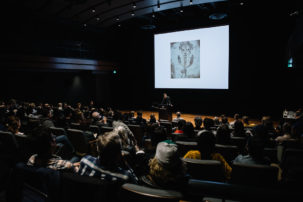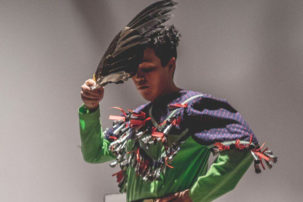Art students are often so bogged down by dense theoretical readings that the last thing they want to do in summer is pick up a book. But there’s a world of art publications out there, some of which you can even take to the beach with you—and the wisdom from which, come fall, you can take to the classroom as well.
Biographies
Artist biographies abound, and are ever-popular, but are rarely included in art-school syllabi. If your taste is art-historical but you fear musty tomes on the subject, try Peter Robb’s M: The Man Who Became Caravaggio, full of scandal and sex, and perfect for a lazy, hazy summer afternoon. More weighty (figuratively and literally—they’re long and heavy, but totally worth it) is Simon Schama’s Rembrandt’s Eyes and Steven Naifeh and Gregory White Smith’s Van Gogh: The Life, the latter a potential companion to the National Gallery’s summer-blockbuster show on the famous Dutch artist. Speaking of blockbusters, if your appetite for Picasso has been whetted after seeing the Art Gallery of Ontario’s current exhibition of works from Paris’ Musée Picasso, try John Richardon’s volumes on the artist: illuminating, and eminently readable. Other essential biographies include Patricia Bosworth’s treatment of photographer Diane Arbus, and Roger Shattuck’s The Banquet Years—a fun, enthralling read on everything you need to know about turn-of-the-century bohemian Paris.
Journals
Art-school students can gain a lot by keeping journals about their practice, as well as reading ones by other artists. Recently, the late Louise Bourgeois’ psychoanalytic writings were published in a two-volume set subtitled The Return of the Repressed; it’s essential reading. Prepare for the Art Gallery of Ontario’s upcoming Frida Kahlo and Diego Rivera exhibition by reading Kahlo’s celebrated diary, which relates her stormy relationship with Rivera and her political convictions; it contains many beautiful watercolours. The second volume of critic Susan Sontag’s journals, As Consciousness Is Harnessed to Flesh, has just been published, chronicling her most famous years and providing a wealth of insight on a pivotal moment in the art world: when modernism gave rise to conceptualism. If your taste is vintage, Eugène Delacroix’s very accessible journals are the gold standard for artist journal-writing.
Guides
Few students crave deep schooling in the summer, but there are a number of books that edify in a fun, breezy way. Who’s Afraid of Conceptual Art? by Peter Goldie and Elisabeth Schellekens is mandatory for anyone who’s ever been baffled by contemporary art and what it might, or might not, mean. Beyond Wilderness: The Group of Seven, Canadian Identity, and Contemporary Art by John O’Brian and Peter White challenges dogma about our national art heritage, and it examines the true place of landscape in contemporary Canadian art. Two classic must-reads are A Primer of Visual Literacy by Donis A. Dondis, which lucidly breaks down all the ways in which images can be seen and analyzed; and Ben Shahn’s The Shape of Content, which sensitively and intelligently lays out the artist’s vocation as a craftsperson, educator and community builder. And Sarah Thornton’s recent Seven Days in the Art World provides a tour of contemporary art’s major institutions that is at once whirlwind and wise.
Gossip
Do you like salacious stories, cutting criticism and juicy rumours about the art world? In addition to Andy Warhol’s diaries, check out some classic tales by Henry Geldzahler, an abstract-expressionist gadfly, in Making It New: Essays, Interviews, and Talks. More dissections of the New York art world can be found in the great anthology of critic Jed Perl’s 1980s writings, Gallery Going: Four Seasons in the Art World. For sheer brazenness, nothing beats collector-patron Peggy Guggenheim’s autobiography Out of This Century.
Literature
Novels have never shied away from depicting artists, and perhaps your summer is in need of a tale that puts your chosen career into focus—or romanticizes it beyond all recognition. For the latter, check out Oscar Wilde’sThe Picture of Dorian Gray and any number of Edgar Allan Poe short stories; you’ll feel like the powerful, and perhaps diabolical, artist you’ve always dreamed of being. Serious meditations on the role of the artist in society can be found in Émile Zola’s The Masterpiece, inspired by Cézanne; W. Somerset Maugham’s The Moon and Sixpence, inspired by Gauguin; and, of course, James Joyce’s masterpiece A Portrait of the Artist as a Young Man. Frothier lore includes Steve Martin’s recent An Object of Beauty, about the machinations of a New York gallerina.
Image: A shot of the Canadian Art archives. Photo: Stefanie Fiore.
This story is sponsored by









